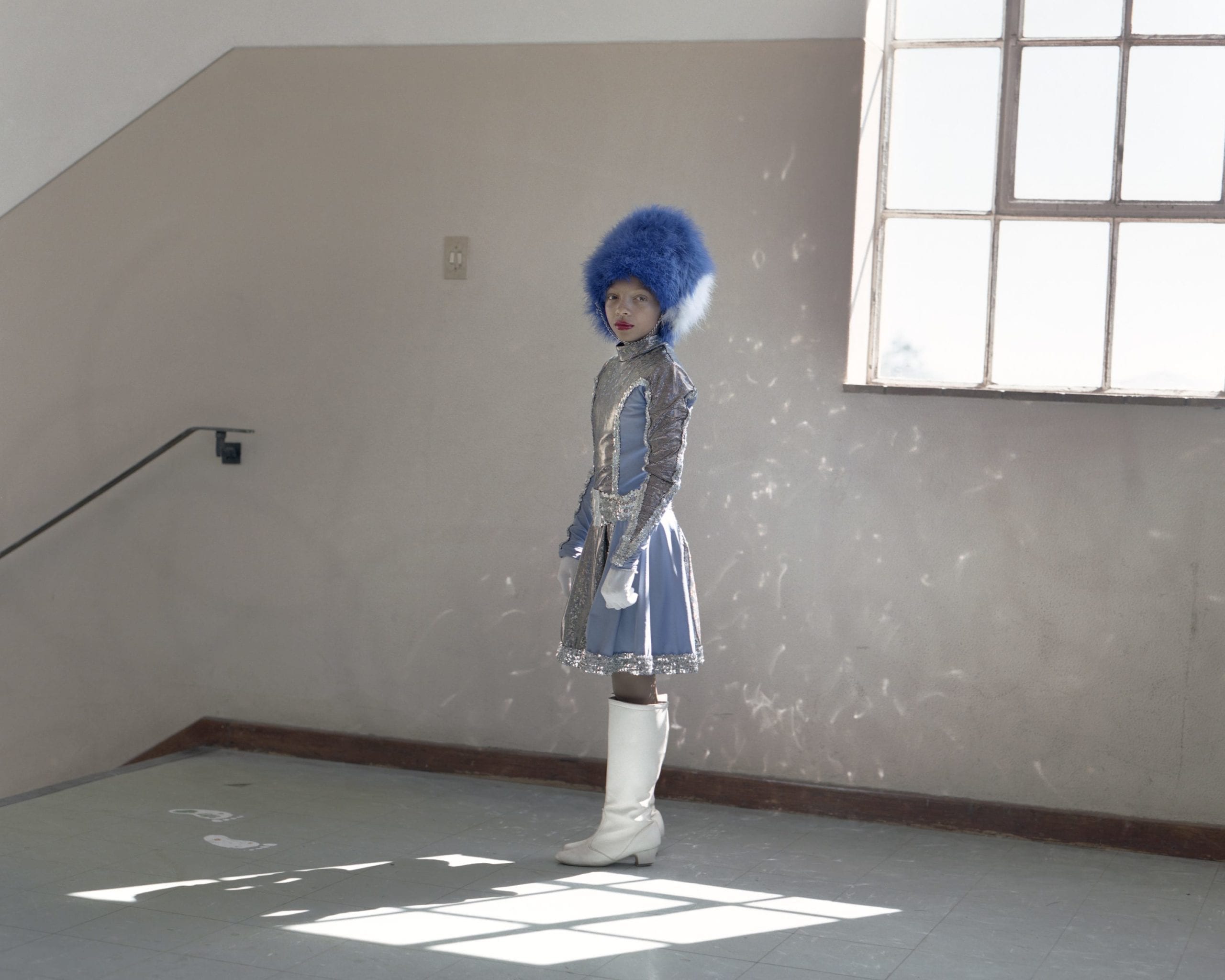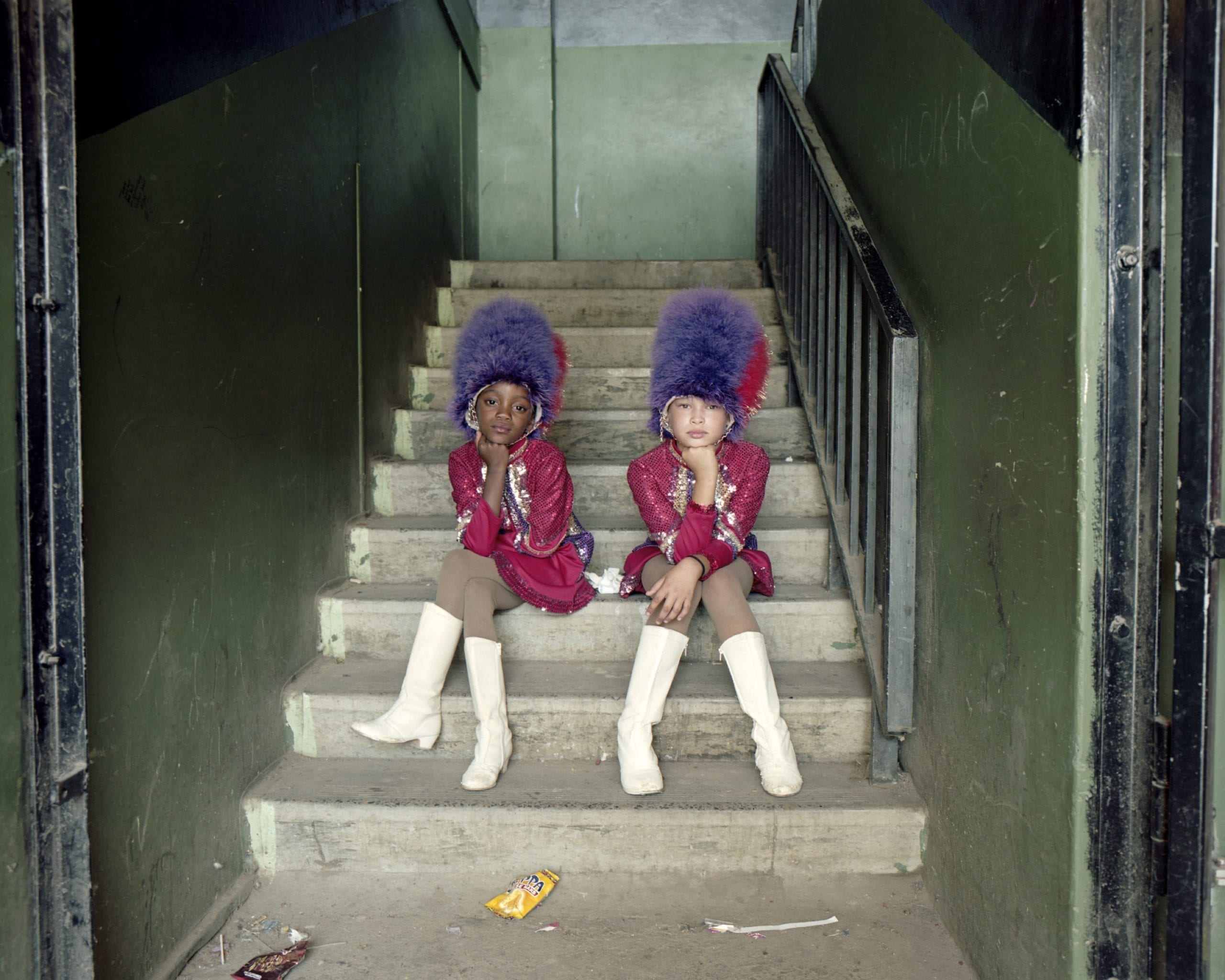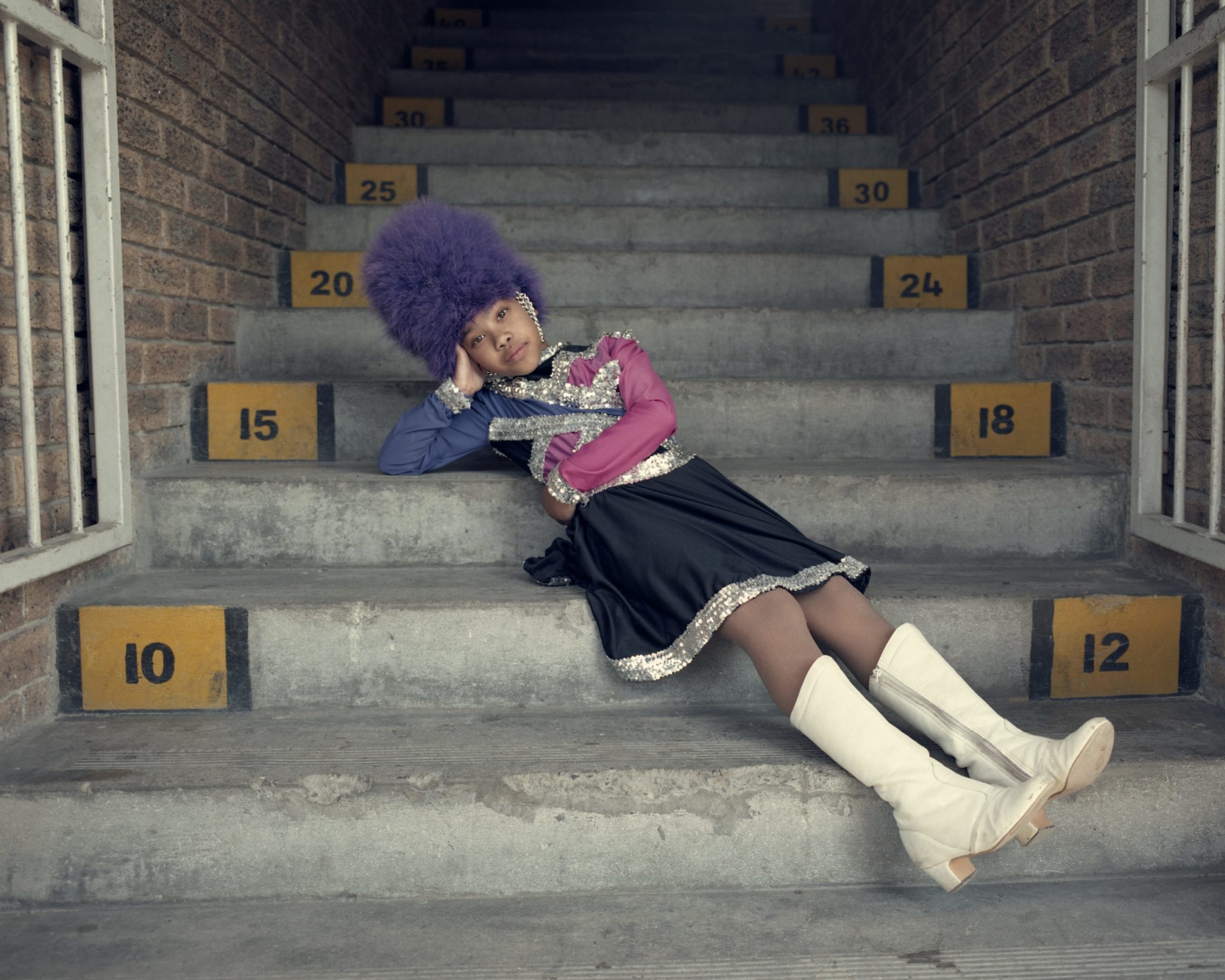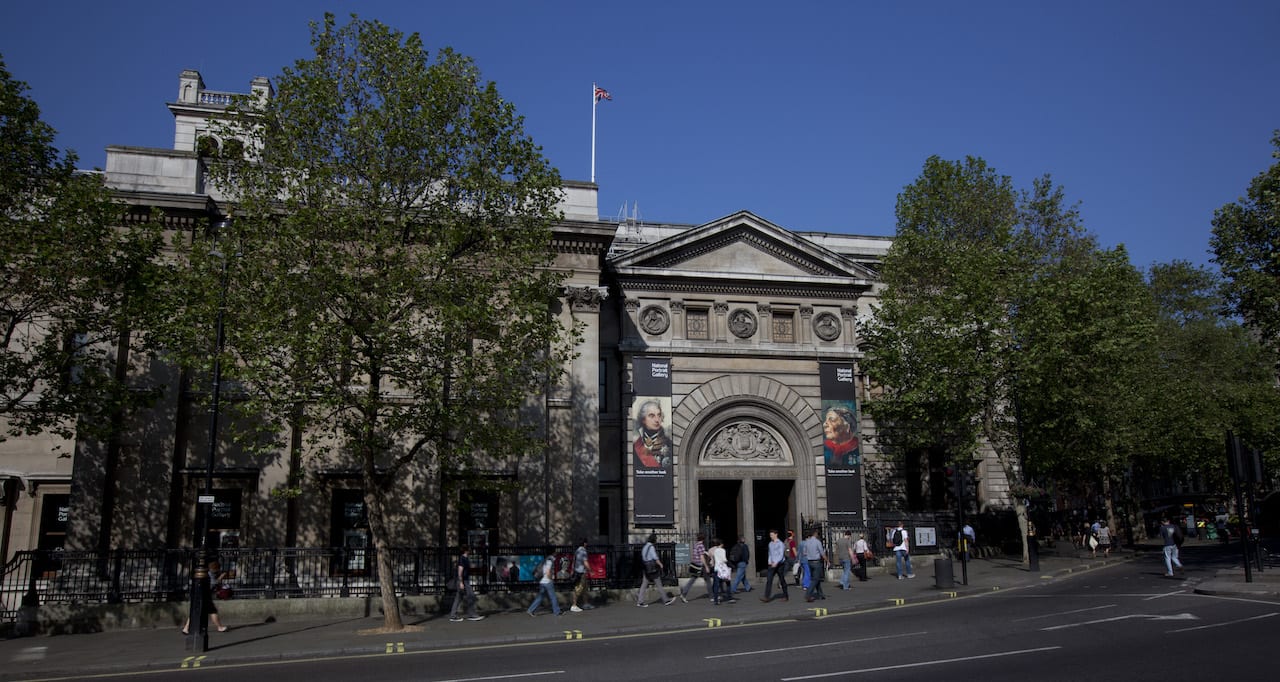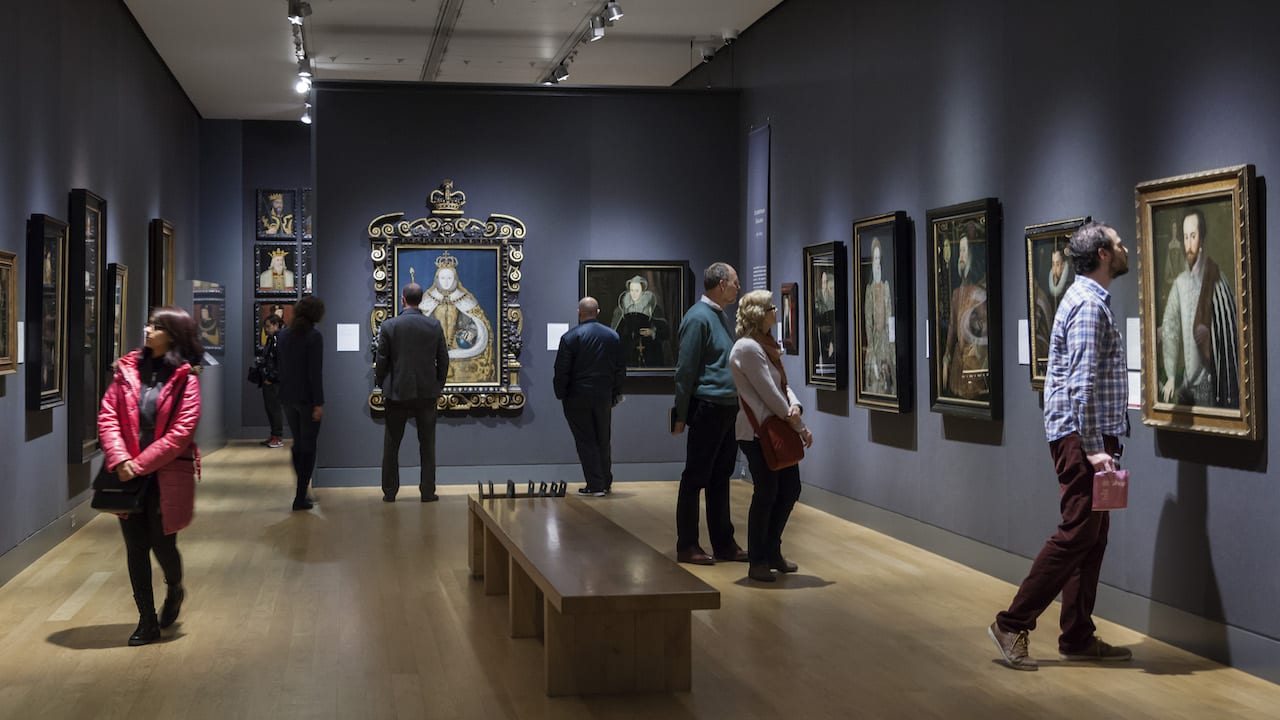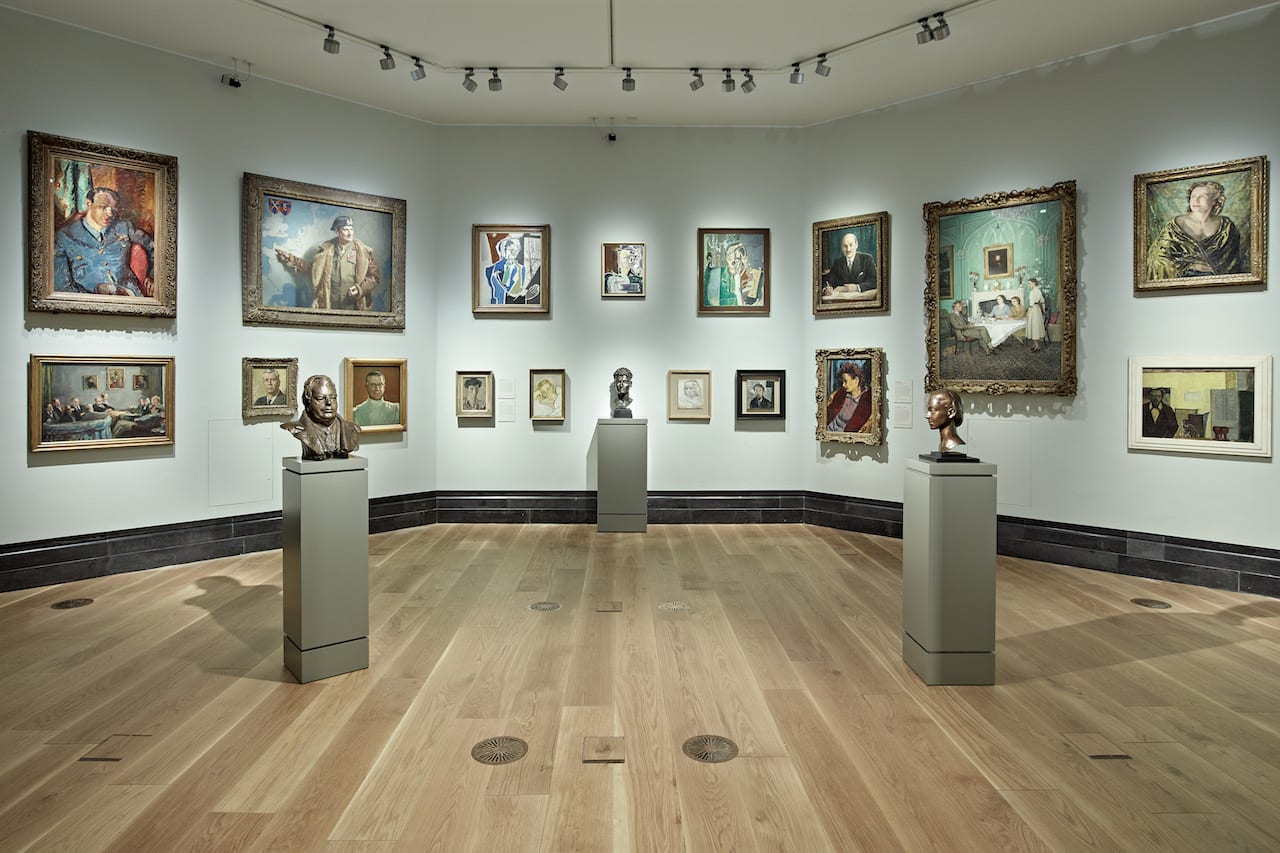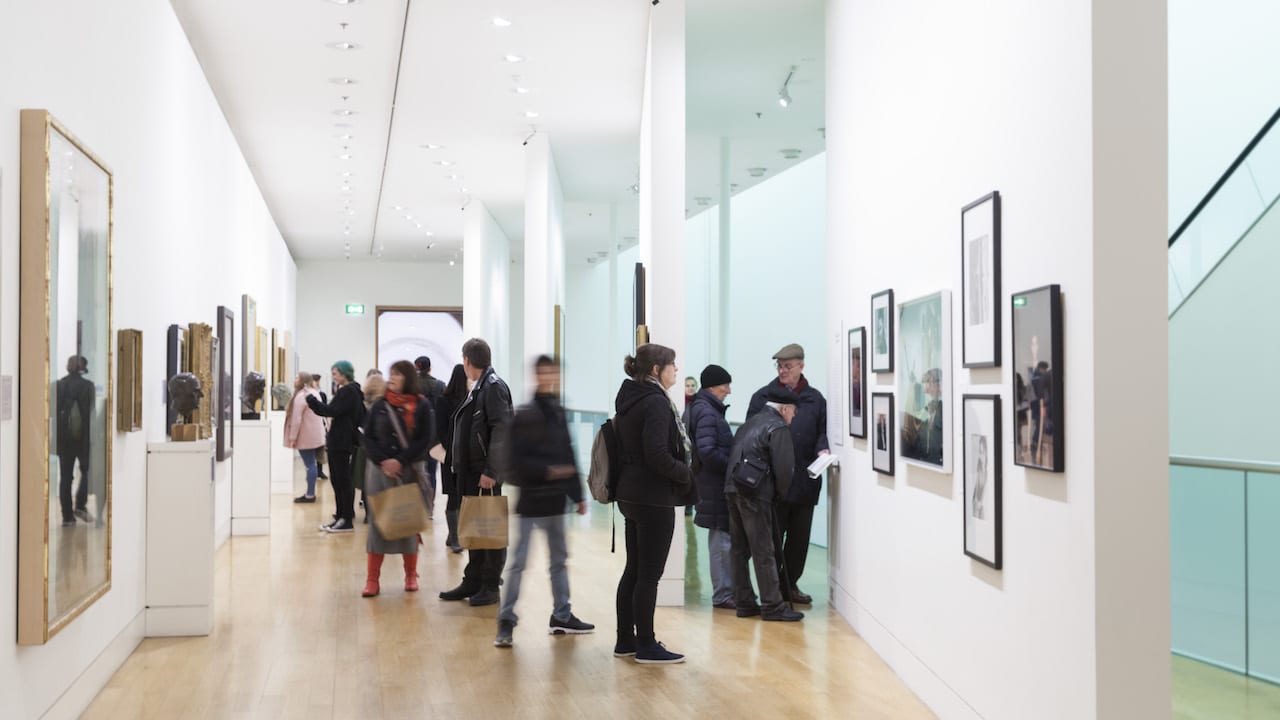Photographs of a woman holding her baby, two shoppers, a drum majorette, and a child from a remote village in Sierra Leone have all been shortlisted for the National Portrait Gallery’s prestigious Taylor Wessing Photographic Portrait Prize this year. The prize winners will be announced at an award ceremony at the NPG on 16 October, with the overall winner receiving £15,000 and other cash prizes awarded to the shortlisted photographers at the judges’ discretion.
Two of the images were shot in London, with Max Barstow behind a striking photograph of two women in a busy shopping street in the city centre. The image comes from his series Londoners and in it, he says, his aim has been to “make unposed portraits with the intensity of images made by great studio photographers such as Richard Avedon and Irving Penn”.
“The photograph selected is a strongly composed and graphically-arresting image,” he adds. “It freezes a pair of friends shopping in the flow of a busy summer Sunday afternoon in the centre of London. I believe the image is peculiarly interesting as a portrait in that it was taken swiftly in the middle of a crowd of passers-by – it is, unusually, both a formally successful portrait with a classic studio-aesthetic and a street photograph in the broad idiom of Henri Cartier-Bresson and Garry Winogrand.”
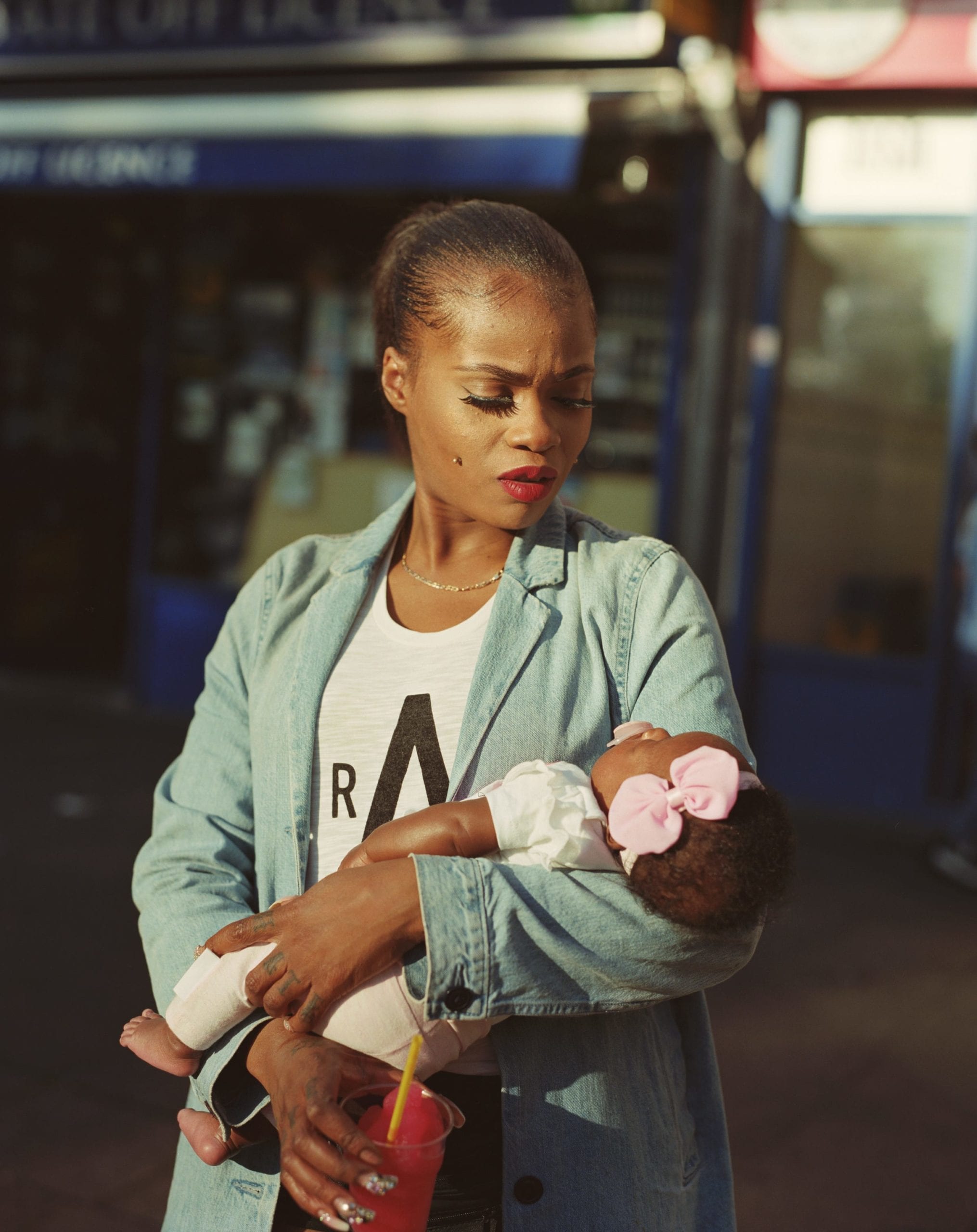
Irish photographer Enda Bowe, meanwhile, shot Cybil McAddy and her daughter Lulu on an estate in East London for his wider series Clapton Blossom. “The series focuses on finding the colour and beauty in the urban, the light in the grey,” he says. “At the centre of the housing estate where this project was made stands a huge cherry blossom tree, the unifying heart of the estate. The beauty of the blossom, symbolising hope, optimism and new beginnings connects the people within the project together.”
The two other shortlisted images both show children, with South African photographer Alice Mann’s portrait of Keisha Ncube, taken from a wider series on majorettes in her homeland, and Joey Lawrence’s image of a young villager from Sierra Leone taken from a project commissioned by WaterAid. Mann explains that: “For these girls, involvement in ‘drummies’ becomes a vehicle for them to excel, and the distinctive uniforms serve as a visual marker of perceived success and represents emancipation from their surroundings.
“Continuing my consideration into notions of femininity and empowerment in modern society, it was my intent to create images that reflect the pride and confidence the girls achieve through identifying as ‘drummies’.”
Lawrence’s portrait of Joe Smart was shot in Tombohuaun [which translates as ‘Tombo’s Wound’], a remote village tucked into the jungle of Sierra Leone’s Eastern Province, which is struggling with water-borne illnesses. “Rather than just creating images that underscored Tombohuaun’s plight,” Lawrence says. “WaterAid and I envisioned a portrait study of the community that would highlight its resilience, its fraternity, its highly organised structure, and its work ethic. These are all the traits that will enable the village to thrive and sustain its clean water resources and practices long after the NGO has completed its work.”
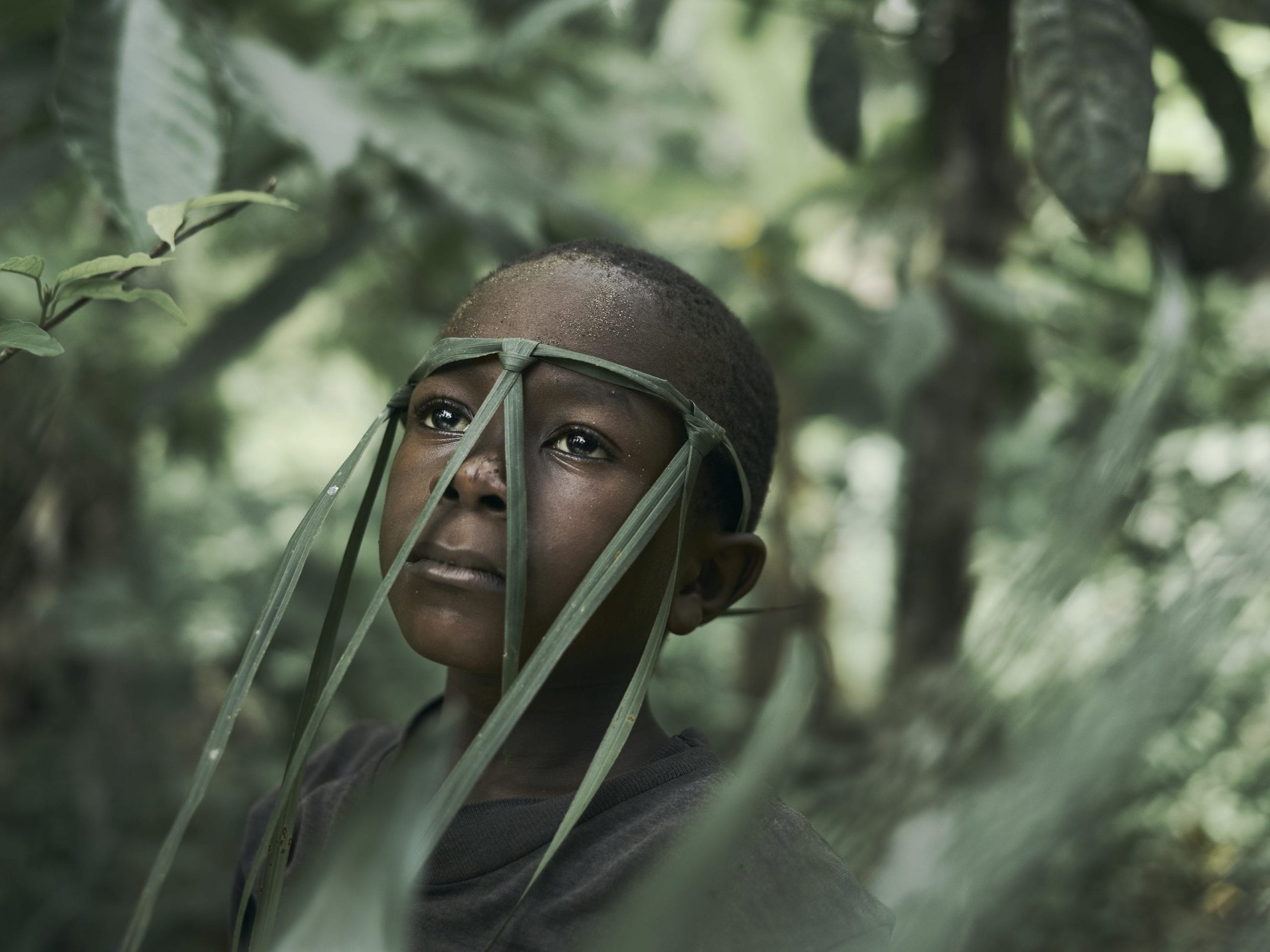
The Taylor Wessing Photographic Portrait Prize was judged this year by photographer Miles Aldridge; Renée Mussai, senior curator at Autograph ABP; Sophie Wright, global cultural director of Magnum Photos; Sabina Jaskot-Gill, curator of photographs at the National Portrait Gallery; and Shane Gleghorn, managing partner of Taylor Wessing LLP. The jury was chaired by Dr Nicholas Cullinan, director of the National Portrait Gallery.
A total of 57 portraits from 49 artists have been selected for display, of which four submissions are a series. The images were selected from 4,462 submissions entered by 1,973 photographers from 70 countries, and the shots which have made it into the exhibition include image-makers who will be familiar to BJP readers, such as Anoush Abrar, Rhiannon Adam, Robin de Puy, Adam Hinton, Kovi Konowiecki, Colin Pantall, and Carla van de Puttelaar.
“What was particularly striking about this year’s entries to the Taylor Wessing Photographic Portrait Prize, was the variety of approaches, techniques and styles of the photographs submitted from around the world,” stated NPG director Dr Cullinan. “I hope that the works selected for the shortlist and 2018 exhibition continue to inspire and engage visitors with photographic portraiture today.”
The selected images go on show at the NPG from 18 October 2018 – 27 January 2019, and the exhibition will also include previously unseen prints from a new body of work by Japanese photographer Rinko Kawauchi. Kawauchi’s work will be the fourth In Focus display, an annual showcase for new work by an internationally renowned photographer, held alongside the photographic portrait prize. Best-known for her books Hanako (a documentary of a young girl of the same name), Hanabi (which translates as ‘fireworks’) and Utatane (a Japanese word that describes the state between wakefulness and sleep, the Japanese photographer was shortlisted for the 2012 Deutsche Börse photography prize.
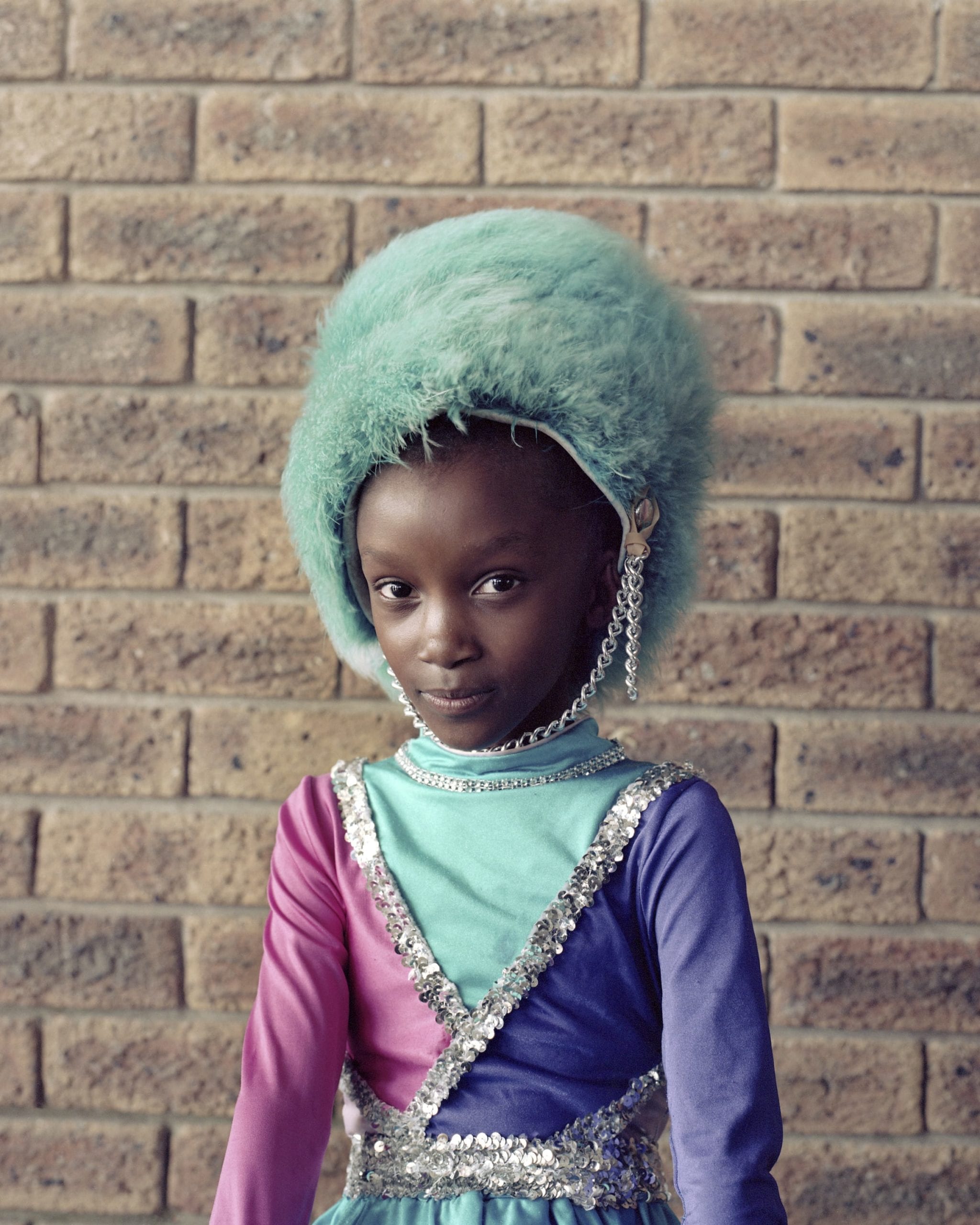
The NPG has also been in the news this week over its visitor numbers, which suffered a much gentler decline over the financial year 2017/18 than previously thought. Initially the drop in visitor numbers over this period was reported as 43%, but this figure has now been attributed to an error by the Ipsos Retail Company. Following a complaint by the NPG, the decline has now been put at 10% instead – or at 1,691,547 visitors rather than the 1,072,377 visitors first reported. “The bottom line is that Ipsos very substantially undercounted the number of visitors,” reads a statement from the NPG. “This new data is being submitted to the culture department.”
The NPG’s figures also suggest that its income also fell over the financial year 2017/18, with ticket income from charging exhibitions down by 13% to £2.6m. Blockbuster exhibitions such as Cézanne Portraits (winter 2017-18) performed well, attracting 136,426 visitors, but two of its other recent shows were the worst-performing since the 1990s, according to The Art Newspaper – photography show Gillian Wearing & Claude Cahun – Behind the mask, another mask (spring 2017) attracted 18,000 visitors, and film-based show Tacita Dean: PORTRAIT (spring 2018) 15,000.
The fall in visitor numbers and paid show income come at a tricky time for the NPG, which is currently fundraising £35.5m for an ambitious refurbishment announced earlier this year – a refurbishment which would increase its gallery space by 20%. So far the Heritage Lottery Fund has pledged £9.4m and a further £13.2m has been secured from private donors, leaving £13m outstanding; the gallery’s single largest source of funding is the government’s Department for Digital, Culture, Media & Sport.
In April this year financial pressures induced the NPG to restructure “to manage down staff numbers”, resulting in 32 redundancies and agreed departures. Those who left included senior staff such as Tanya Cooper, curatorial director, and Phillip Prodger, the head of photographs – who joined in June 2014 to replace Terence Pepper, who was curator of photographs and head of the photographs collection at the NPG from 1978-2013. Sandy Nairne, who joined the gallery as director in 2002 retired in 2015; his replacement, Nicholas Cullinan, was aged just 37 years old when he took up the reins.
In its accounts, the gallery put the falling visitor numbers down to external factors, stating: “concerns over security [following terrorist incidents in London], the rise in the cost of living, increased travel costs and the transport disruptions affecting a number of key commuter lines into and stations in central London may all have played their part”.
The Taylor Wessing Photographic Portrait Prize is on show from 18 October 2018 – 27 January 2019 at the National Portrait Gallery, London. Entry costs £5 plus a suggested donation of £5 www.npg.org.uk
